Related Research Articles

Central Plaza is a 78-storey, 374 m (1,227 ft) skyscraper completed in August 1992 at 18 Harbour Road, in Wan Chai on Hong Kong Island in Hong Kong. It is the third tallest tower in the city after 2 International Finance Centre in Central and the ICC in West Kowloon. It was the tallest building in Asia from 1992 to 1996, until the Shun Hing Square was built in Shenzhen, a neighbouring city. Central Plaza surpassed the Bank of China Tower as the tallest building in Hong Kong until the completion of 2 IFC.

Centre Point is a building in Central London, comprising a 34-storey tower; a 9-storey block to the east including shops, offices, retail units and maisonettes; and a linking block between the two at first-floor level. It occupies 101–103 New Oxford Street and 5–24 St Giles High Street, WC1, with a frontage also to Charing Cross Road, close to St Giles Circus and almost directly above Tottenham Court Road tube station. The site was once occupied by a gallows, and the tower sits directly over the former route of St Giles High Street, which had to be re-routed for the construction.
Structural engineers analyze, design, plan, and research structural components and structural systems to achieve design goals and ensure the safety and comfort of users or occupants. Their work takes account mainly of safety, technical, economic, and environmental concerns, but they may also consider aesthetic and social factors.

The large panel system building is a building constructed of large, prefabricated concrete slabs. Such buildings are often found in housing development areas.
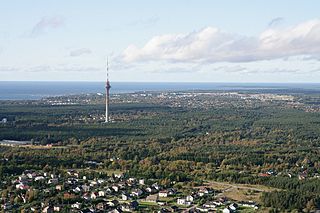
Tallinn TV Tower is a free-standing structure with an observation deck, built to provide better telecommunication services for the 1980 Moscow Summer Olympics regatta event. It is located near the suburb Pirita, six km north-east of the Tallinn city center. With its 313 m (1030.2 ft), the TV tower is the tallest nonbuilding structure in Tallinn. The tower was officially opened on 11 July 1980. The viewing platform at a height of 170 metres was open to the public until 26 November 2007, when it was closed for renovation. The tower began receiving visitors again on 5 April 2012. The building is administered by the public company Levira and is a member of the World Federation of Great Towers.

Prestressed concrete is a form of concrete used in construction. It is substantially "prestressed" (compressed) during production, in a manner that strengthens it against tensile forces which will exist when in service.
Prefabrication is the practice of assembling components of a structure in a factory or other manufacturing site, and transporting complete assemblies or sub-assemblies to the construction site where the structure is to be located. Some researchers refer it to “various materials joined together to form a component of the final installation procedure“.
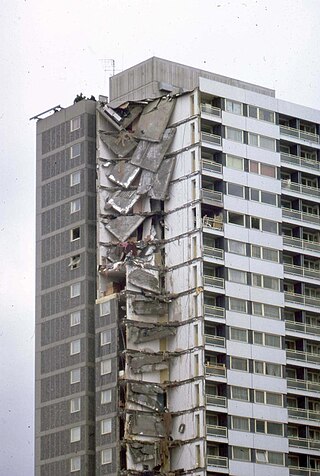
Ronan Point was a 22-storey tower block in Canning Town in Newham, East London, that partly collapsed on 16 May 1968, only two months after it had opened. A gas explosion blew out some load-bearing walls, causing the collapse of one entire corner of the building; four people died and 17 were injured. The nature of the failure led to a loss of public confidence in high-rise residential buildings, and major changes in British building regulations resulted.

A multistorey car park or parking garage, also called a multistorey, parking building, parking structure, parkade, parking ramp, parking deck, or indoor parking, is a building designed for car, motorcycle, and bicycle parking in which parking takes place on more than one floor or level. The first known multistorey facility was built in London in 1901, and the first underground parking was built in Barcelona in 1904. The term multistorey is almost never used in the US, because almost all parking structures have multiple parking levels. Parking structures may be heated if they are enclosed.

108 St Georges Terrace or Palace Tower is a 50-storey office tower in Perth, Western Australia. Completed in 1988, the building measures 214 metres (702 ft) to its roof and 247 metres (810 ft) to the tip of its communications antenna. It was the tallest building in Perth from its completion in 1988 until 1992 when it was overtaken in height by Central Park. As of 2023, it is the third-tallest building in the city. The concrete tower has a distinctive profile, with a triangular plan.
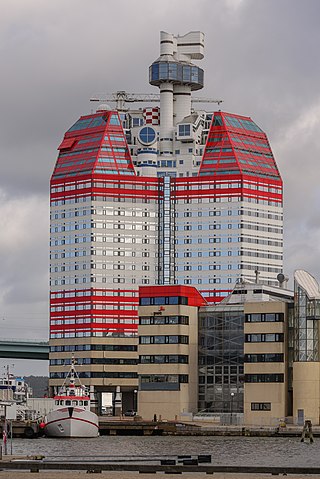
The Lilla Bommen named after the surrounding location of Lilla Bommen, commonly referred to as Läppstiftet , is an 86 m, 22-floor building housing office, networking and restaurant spaces in Gothenburg, Sweden. The building’s distinct post-modern architectural style, popularly referred to as “The Lipstick” due to its distinctive red-and-white colour schematic, was erected on the banks of Göta River in 1989 by Skanska Property West AB. The 32000 sqm office space which houses over 900 office workers, is a popular tourist destination for its top-floor lookout, Götheborgs Utkiken and restaurants such as the Restuarang Läppstiftet, has contributed to the landmark status of the building in the Central Gothenburg skyline.

Chelsea Harbour is a contemporary mixed-use development in West London, situated in its Sands End area, along Chelsea Creek, the historic southeastern boundary of the London Borough of Hammersmith and Fulham with the southwestern boundary of the Royal Borough of Kensington and Chelsea, and opposite the site of the old Lots Road Power Station in Chelsea. The development consists of luxury apartments, the Chelsea Harbour Marina and the Chelsea Harbour Design Centre and a hotel, 'the Chelsea Harbour Hotel'.
Pell Frischmann (PF) is a multi-disciplinary engineering consultancy based in London that provides structural and civil engineering, planning, design, and consulting services. Pell Frischmann employs over 1,000 staff worldwide with eight offices across the UK and international offices in India, the Middle East, Turkey and Romania.

The Cube is a 24-storey mixed-use development in the centre of Birmingham, England. Designed by Ken Shuttleworth of Make Architects, it contains 135 flats, 111,500 square feet (10,359 m2) of offices, shops, a hotel and a 'skyline' restaurant. It is the final phase of The Mailbox development.
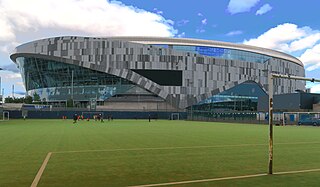
The Institution of Structural Engineers' Structural Awards have been awarded for the structural design of buildings and infrastructure since 1968. The awards were re-organised in 2006 to include ten categories and the Supreme Award for structural engineering excellence, the highest award a structural project can win.

Voided biaxial slabs, sometimes called biaxial slabs or voided slabs, are a type of reinforced concrete slab which incorporates air-filled voids to reduce the volume of concrete required. These voids enable cheaper construction and less environmental impact. Another major benefit of the system is its reduction in slab weight compared with regular solid decks. Up to 50% of the slab volume may be removed in voids, resulting in less load on structural members. This also allows increased weight and/or span, since the self-weight of the slab contributes less to the overall load.
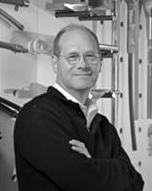
William Frazier Baker is an American structural engineer known for engineering the Burj Khalifa, the world's tallest building/man-made structure and a number of other well known buildings. He is currently a structural engineering partner in the Chicago office of Skidmore, Owings & Merrill, LLP (SOM).
The 1950s and 1960s saw the construction of numerous brutalist apartment blocks in Sheffield, England. The Sheffield City Council had been clearing inner-city residential slums since the early 1900s. Prior to the 1950s these slums were replaced with low-rise council housing, mostly constructed in new estates on the edge of the city. By the mid-1950s the establishment of a green belt had led to a shortage of available land on the edges of the city, whilst the government increased subsidies for the construction of high-rise apartment towers on former slum land, so the council began to construct high-rise inner city estates, adopting modernist designs and industrialised construction techniques, culminating in the construction of the award-winning Gleadless Valley and Park Hill estates.

Herbert William Charles Kempton Dyson, M.I.Struct.E. (1880–1944), known professionally as H. Kempton Dyson, was an English structural engineer, civil engineer, architect, editor and author who specialised in reinforced concrete structures. He was a founder member and the first permanent secretary of the Concrete Institute, which became the Institution of Structural Engineers. He designed the Central Bandstand, Herne Bay in 1924.
Sir Alfred Grenville Pugsley, FRS was a British structural engineer.
References
- ↑ "List of Fellows".
- 1 2 New Civil Engineer Magazine, "Frischmann's Next Move", 3 October 1996
- ↑ "Index of British companies from a to Z".
- ↑ Centre Point
- ↑ The use and behaviour of large diameter piles in London Clay, The Structural Engineer, (Frischmann & Flemming, 1962)
- ↑ "2009 Overall Winner" (PDF). Concrete Society Awards. p. 3.
- ↑ National Westminster Tower: design (Frischmann, Lippard & Steger 1983)
- ↑ Features in the design and construction of Drapers Gardens Development (Frischmann, Brown & Prabhu, 1967)
- ↑ Top down construction of deep basements, (Frischmann & Wilson, 1984)
- ↑ "Innovation: Piles of parking in deep space - the ways builders are meeting the challenge of huge underground car parks taking shape in London" - The Sunday Times, 21 February 1988
- ↑ "High Flats Defended" - The Times, 31 January 1969
- ↑ "Greenwood Refuses TV Confrontation" - The Times, 13 November 1968
- ↑ Discussion on the paper Features in the design and construction of Drapers Gardens Development (Frischmann, Brown & Prabhu, 1967)
- ↑ "What about drving across the channel?" - 21 March 1971
- ↑ "A Tunnel or Bridge Across the Channel at Last?" - 13 September 1981
- ↑ "Tall Buildings" - Science Journal October 1965
- ↑ "Tower Cities' Two Miles High" - The Times, 20 September 1965
- ↑ "Can men emulate the termite?" - The Times, 14 May 1968